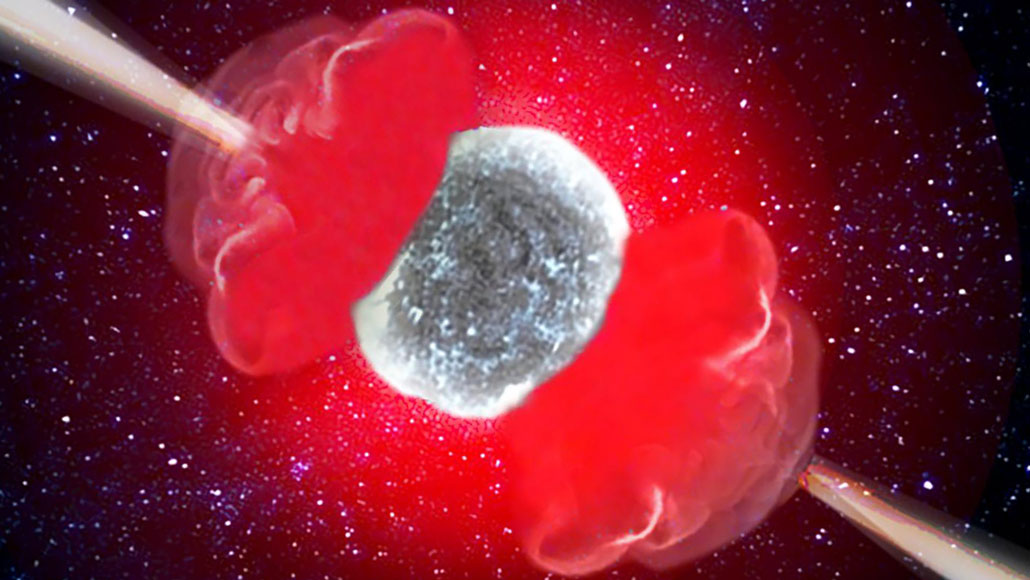Souped-up supernovas may produce much of the universe's heavy elements
Analysis of a rare, ancient star suggests a new birthplace for elements like uranium and silver

Explosions of massive, magnetized stars (similar to the one illustrated) may be the source of much of the universe’s heavy elements.
ANNA SERENA ESPOSITO
By Mara Johnson-Groh
JULY 7, 2021 AT 12:10 PM
Violent explosions of massive, magnetized stars may forge most of the universe’s heavy elements, such as silver and uranium.
These r-process elements, which include half of all elements heavier than iron, are also produced when neutron stars merge (SN: 10/16/17). But collisions of those dead stars alone can’t form all of the r-process elements seen in the universe. Now, scientists have pinpointed a type of energetic supernova called a magnetorotational hypernova as another potential birthplace of these elements.
The results, described July 7 in Nature, stem from the discovery of an elderly red giant star — possibly 13 billion years old — in the Milky Way’s halo (SN: 1/9/20). By analyzing the star’s elemental makeup, which is like a star’s genetic instruction book, astronomers peered back into the star’s family history. Forty-four different elements seen in the star suggest that it was formed from material left over “by a special explosion of one massive star soon after the Big Bang,” says astronomer David Yong of the Australian National University in Canberra.
The ancient star’s elements aren’t from the remnants of a neutron star merger, Yong and his colleagues say. Its abundances of certain heavy elements such as thorium and uranium were higher than would be expected from a neutron star merger. Additionally, the star also contains lighter elements such as zinc and nitrogen, which can’t be produced by those mergers. And since the star is extremely deficient in iron — an element that builds up over many stellar births and deaths — the scientists think that the red giant is a second-generation star whose heavy elements all came from one predecessor supernova-type event.
More:
https://www.sciencenews.org/article/star-explosion-hypernova-supernova-universe-heavy-elements-origin
